

Max Davies
2026 Ram 1500 Rebel review
5 Days Ago
Skoda is close to having a full SUV line-up in Australia, with the arrival of the range-topping Karoq 140TSI Sportline. Does a dash of sporty spice make this the Karoq we really, really want?
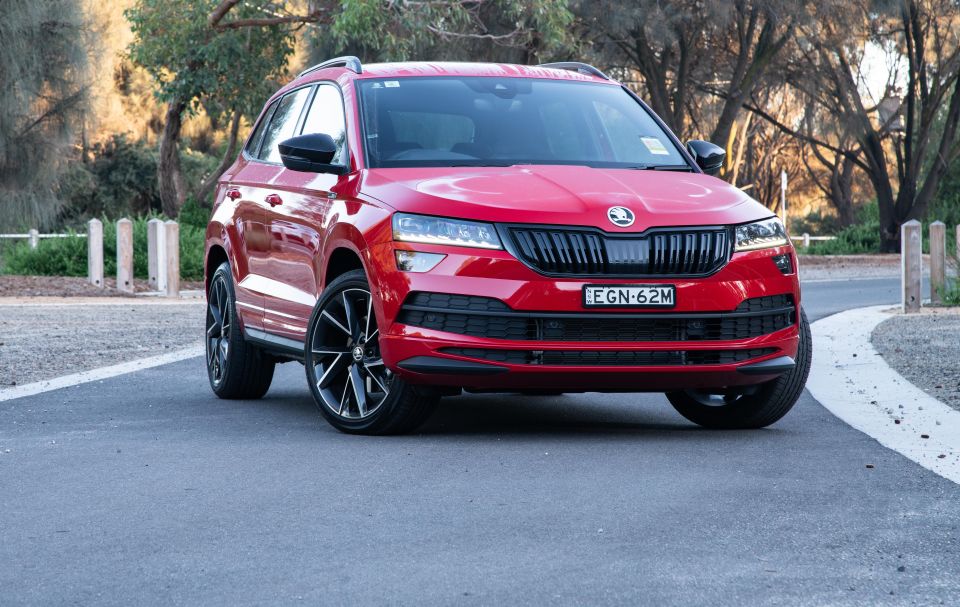
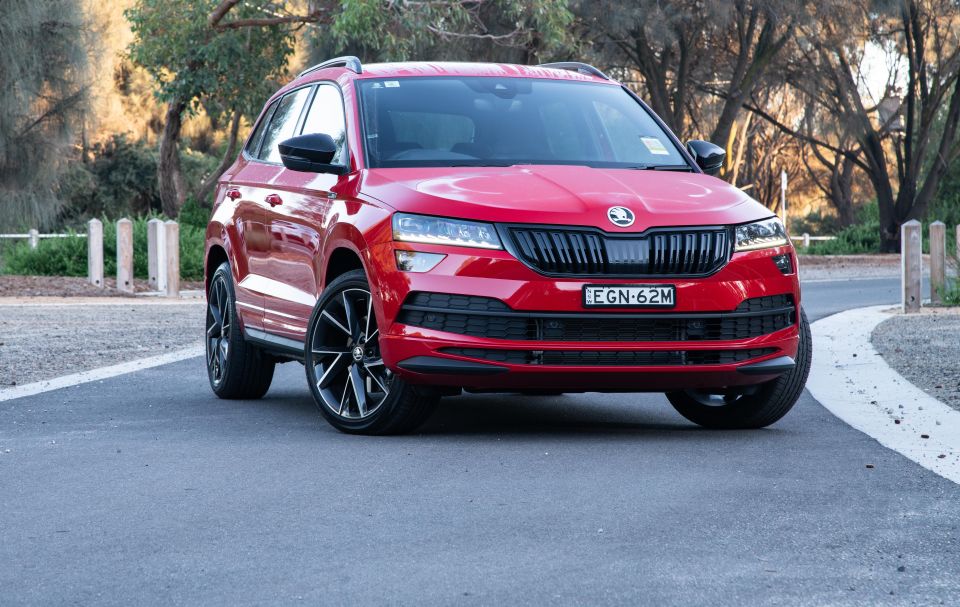

Contributor
New from
$32,290
excl. on-roads

Contributor
New from
$32,290
excl. on-roads


Contributor
New from
$32,290
excl. on-roads

Contributor
New from
$32,290
excl. on-roads
Quickly see how this car stacks up against its competition. Select any benchmark to see more details.
Where expert car reviews meet expert car buying – CarExpert gives you trusted advice, personalised service and real savings on your next new car.
Skoda is getting ready to charge Down Under. Its sales might be small compared to its more fashionable siblings at Volkswagen, but the Czech brand is close to having a full range of SUVs in Australia, with a new Scala hatchback and Octavia range to follow soon.
The 2020 Skoda Karoq is a critical cog in that push. As a compact crossover, it’s competing in one of the nation’s most competitive segments.
And as of right about… now, there’s a proper two-tiered range.

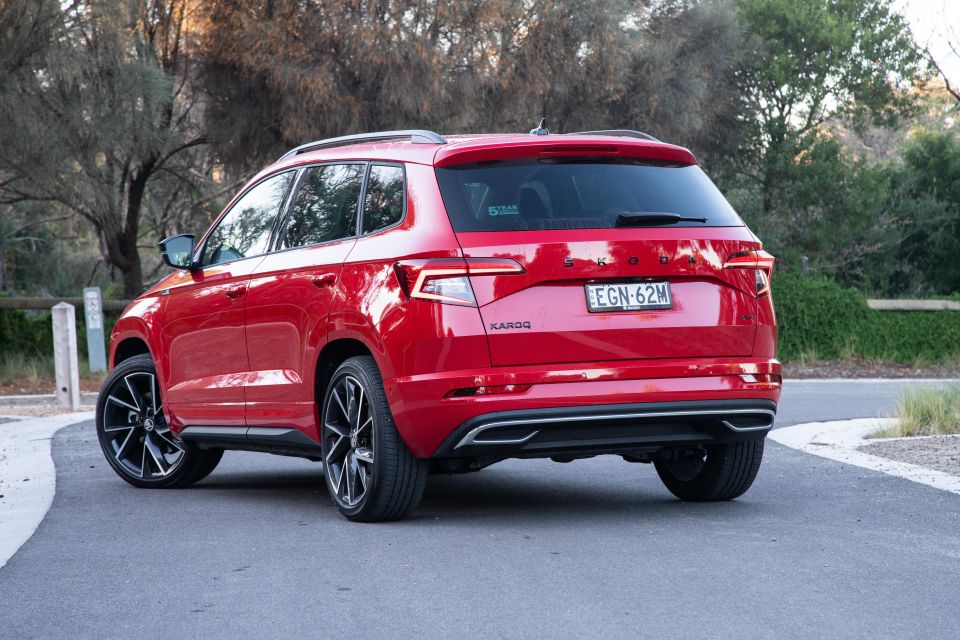
Sitting at the top of the tree is the Skoda Karoq 140TSI Sportline. With a punchy four-cylinder engine and shrunken Kodiaq looks, it’s expected to attract the lion’s share of buyers in Australia.
It would want to be good, then.
Pricing for the Skoda Karoq range starts at $32,990 before on-road costs, while the 140TSI Sportline flagship on show here kicks off at $39,990 before on-roads.
Two options packages are offered on the range-topper: a Tech Pack ($4200), and a Travel Pack ($3800).
The former brings a 9.2-inch infotainment system with satellite navigation and gesture control, automatic parking, a powered tailgate, a 10-speaker audio system, digital radio, wireless phone charging, and drive modes.
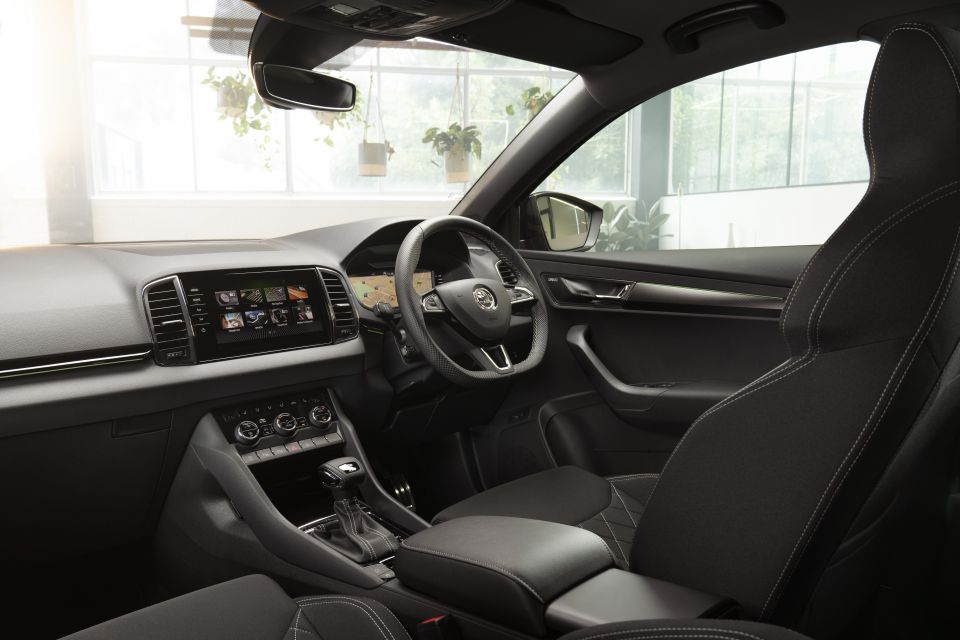

The latter adds blind-spot monitoring, lane-keeping assist, heated front and rear seats, rear cross-traffic alert, Traffic Jam Assist, and power-folding mirrors.
A fully-optioned Karoq Sportline undercuts the more powerful Volkswagen Tiguan 162TSI Highline, while an un-optioned model is in line with the range-topping Mazda CX-30, Volkswagen T-Roc, and Kia Seltos.
Buy your new car without the stress. It's fast, simple and completely free.

Great service from Travis and team, second time I have used this business would not hesitate to recommend them to anyone
Craig C.
Purchased a Ford Ranger in Sunshine Coast, QLD
CarExpert helped Craig save $7,224 on his Ford Ranger, now let us save you on your next new car.
Get your BEST priceExternally, the Sportline is the sportiest Karoq money can buy. Duh.
It rides on 19-inch alloy wheels, and features a racier body kit with black trim, full LED headlights, and black roof rails.


Inside, it features a flat-bottomed steering wheel with perforated leather trim, gear shift paddles, and stainless steel pedals. A digital Virtual Cockpit instrument binnacle is also included.
That’s atop standard equipment such as front parking sensors, dual-zone climate control, keyless entry and start, automatic headlights and wipers, a rear-view camera, and an array of cargo-organising nets for the boot.
This being a Skoda, there’s a huge range of ‘Simply Clever’ features scattered around the car.
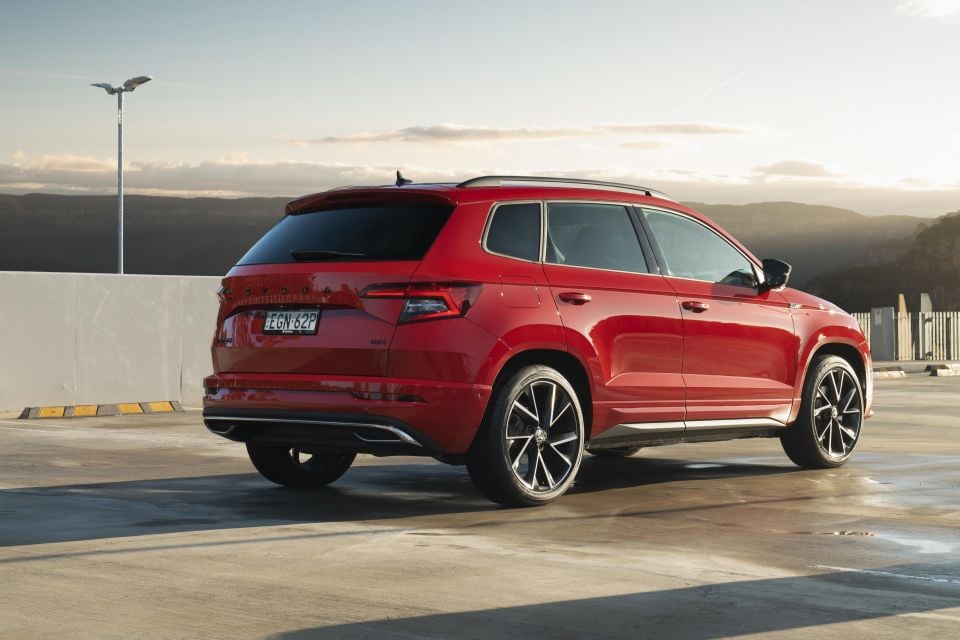
There’s an umbrella in the door, a reversible cup/coin holder on the transmission tunnel, a parking ticket holder on the windscreen, and an in-door rubbish bin.
You also get a pop-out LED torch in the boot.
The Skoda Karoq has a five-star ANCAP range based on testing carried out in 2017.
It scored 93 per cent for adult occupant protection, 79 per cent for child occupant protection, 73 per cent for vulnerable road user protection, and 58 per cent for safety assist.
Along with a full suite of airbags, the car features autonomous emergency braking as standard, and the addition of the Travel Pack brings blind-spot monitoring, lane-keeping assist, and rear cross-traffic alert.
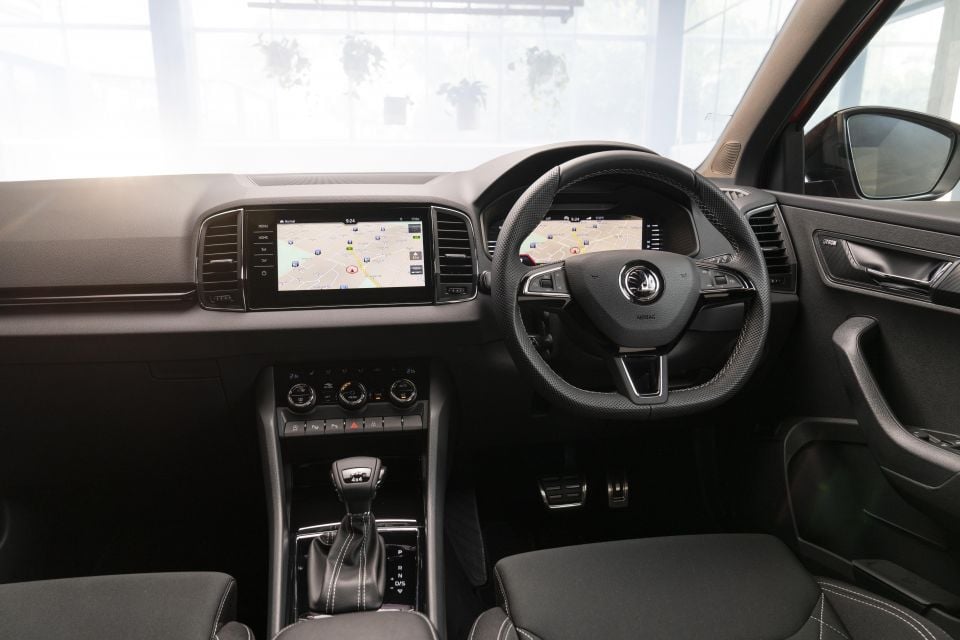
There’s no mistaking the Karoq for anything but a Skoda. Although it’s smaller than the Kodiaq, the little Karoq borrows heavily from its bigger brother, from the design of its climate control binnacle to the layout of the centre console.
That’s no bad thing, because the Kodiaq is among the most logically laid-out options on the market.
There are two real highlights in the Sportline: the seats, and the excellent Virtual Cockpit instrument binnacle.
The seats have the same basic design as those of the Kodiaq Sportline, which means they walk the tightrope between support and comfort like few other pews on the market. They’re also home to some of the toastiest bum warmers in the business.
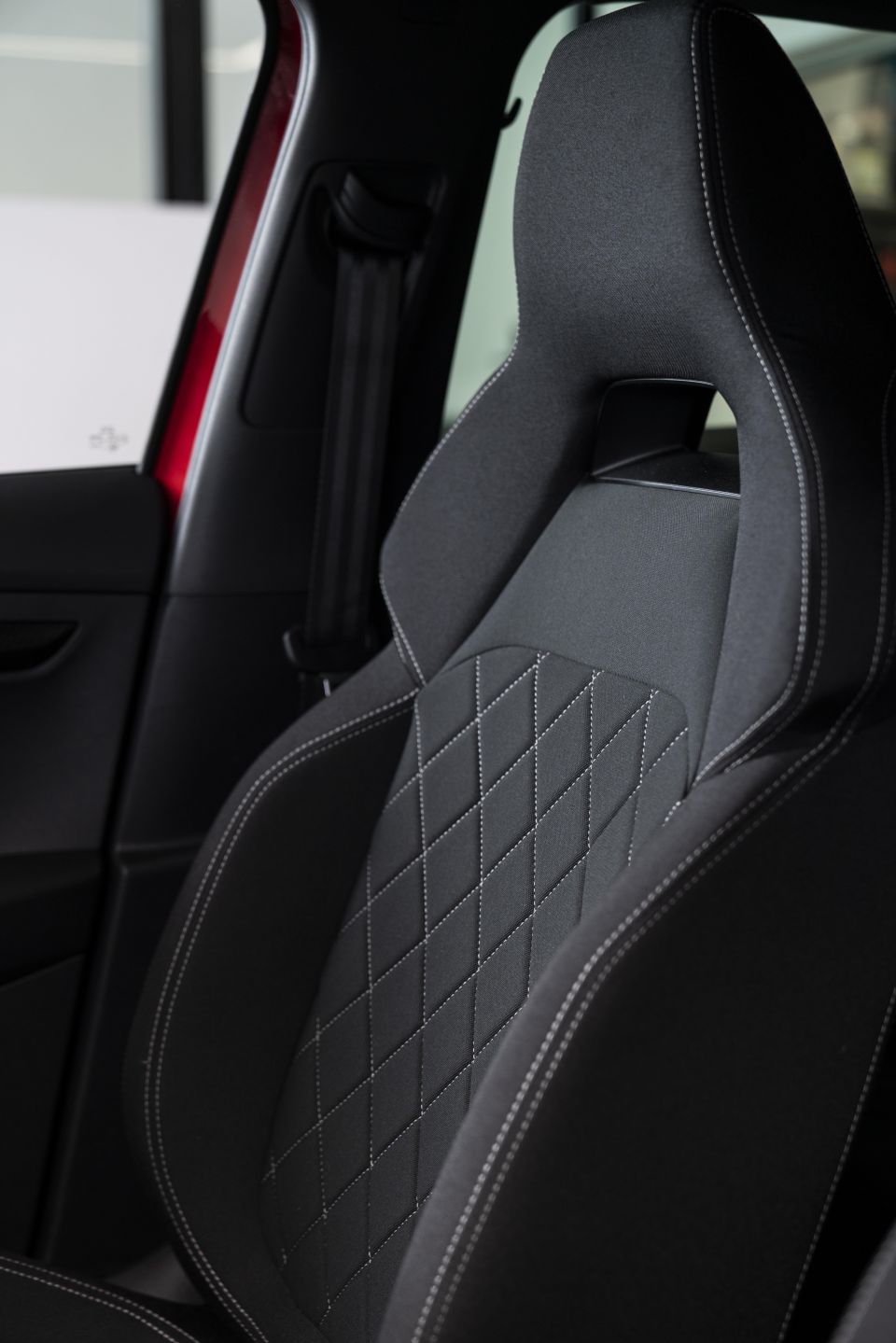
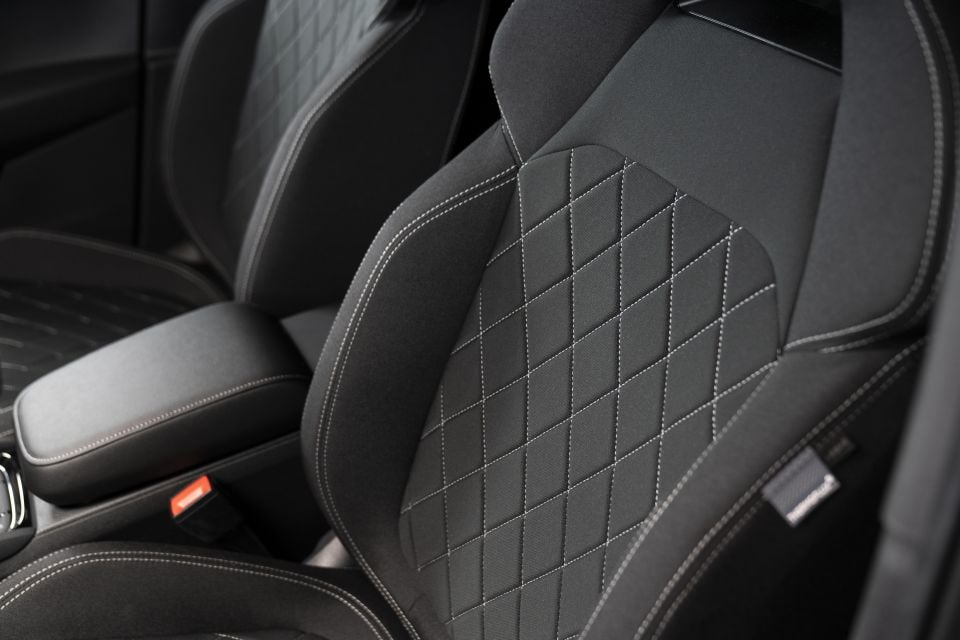
Here they’re trimmed in something called Thermoflux fabric, complete with a quilted finish. According to Skoda, it’s breathable and resilient, but it feels like a cross between nylon and neoprene. The leather and suede trim from the Kodiaq Sportline is much, much nicer – and power adjustment would be nice in a near-$50,000 flagship.
As for the Virtual Cockpit? It’s still the benchmark for digital instruments at this end of the market, with a crisp 10.25-inch display and just the right amount of customisation options.
There’s an extra dash of sportiness in the fonts and chequered flag detailing used in the Sportline.
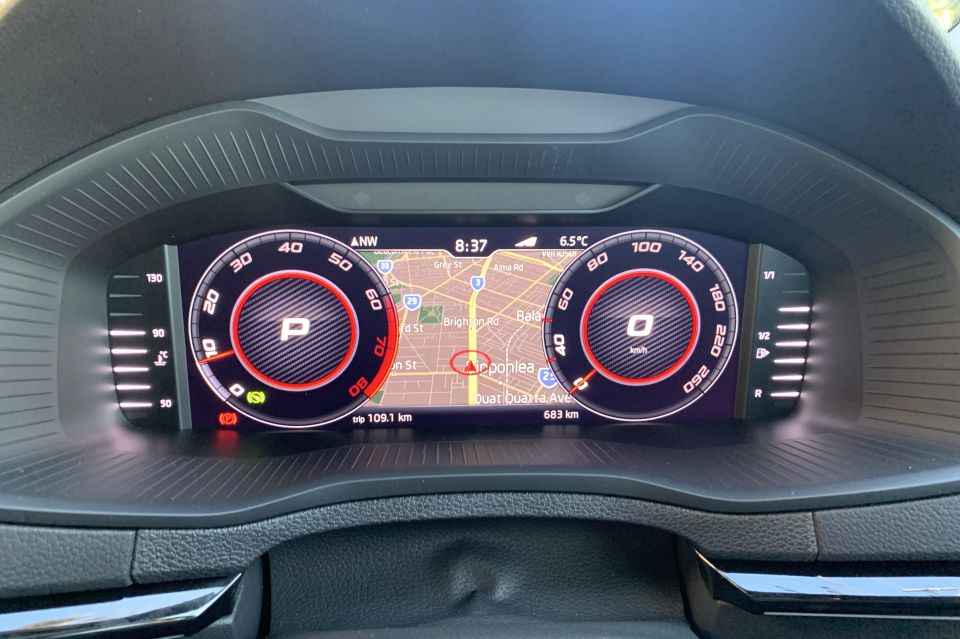
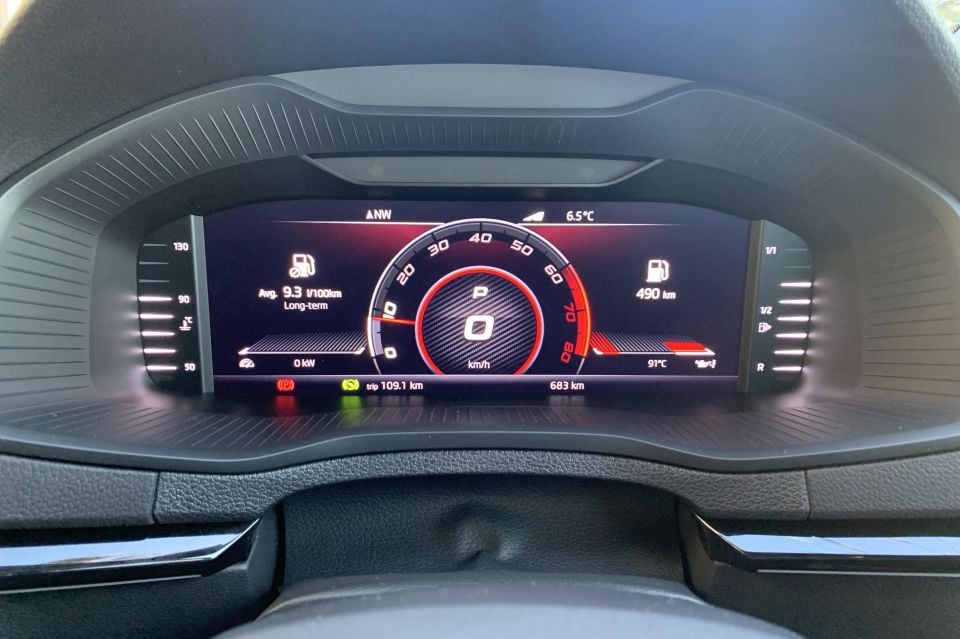
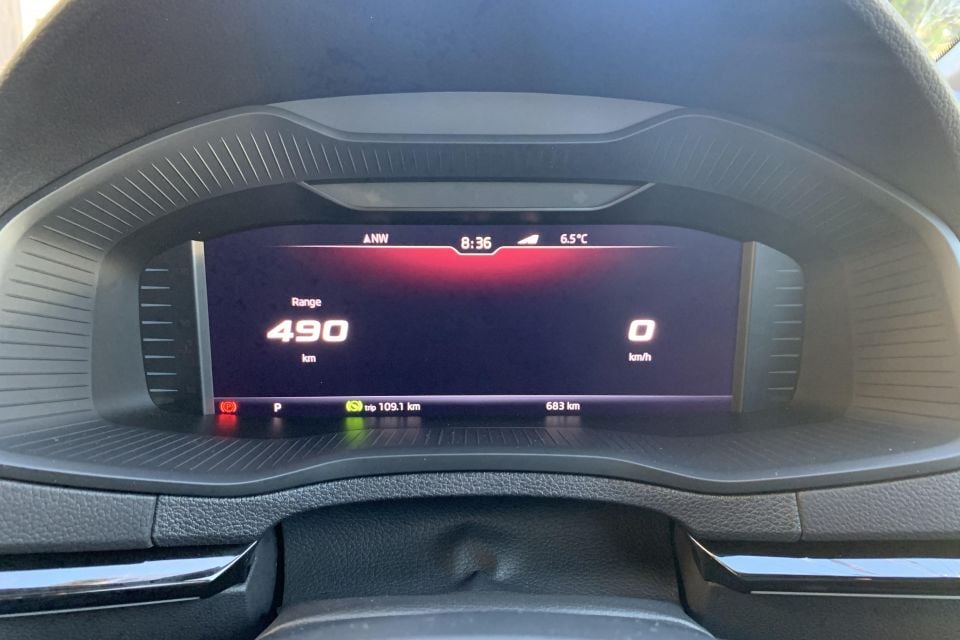
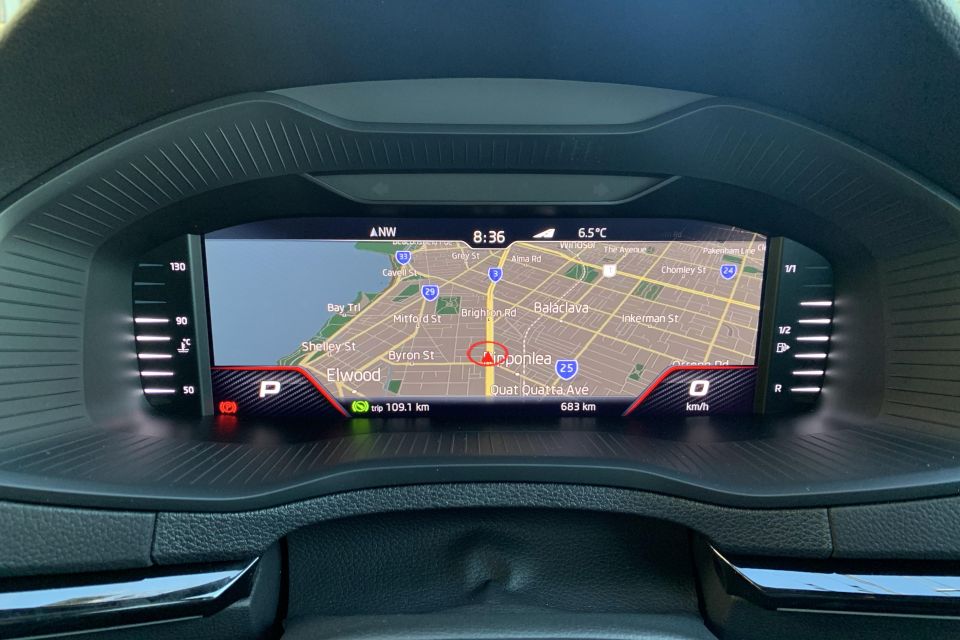
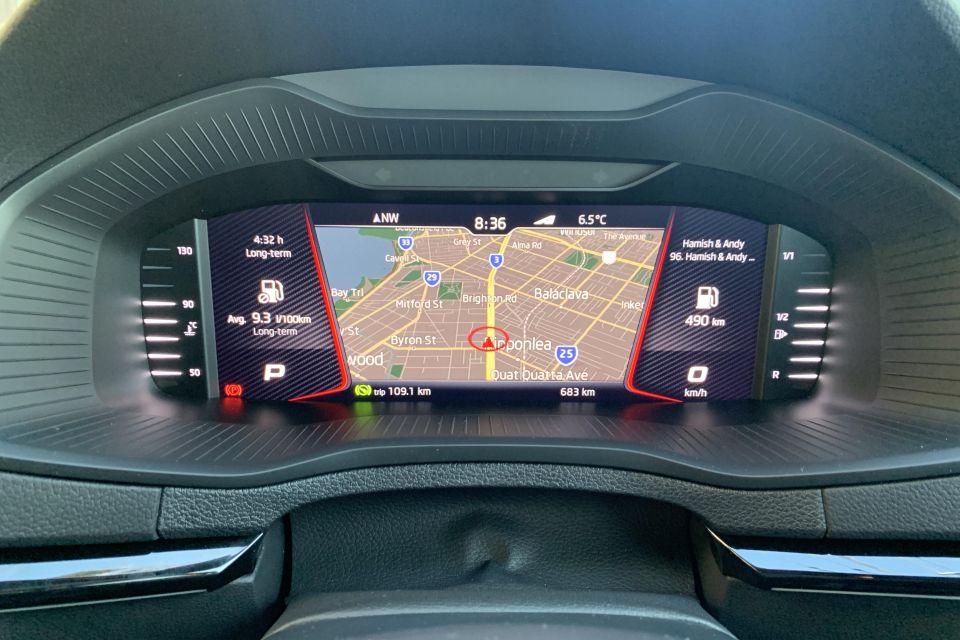
It works with an 8.0-inch central touchscreen infotainment system, complete with satellite navigation, Apple CarPlay and Android Auto, and DAB digital radio.
As is usually the case with Volkswagen Group products, it’s snappy and easy to use, although the gloss black touch buttons on the screen’s left are a magnet for fingerprints.
With tall roofline and large glasshouse, the interior feels light and airy. The driving position is excellent for taller drivers, and space in the rear is surprisingly good. Headroom in particular is exceptional.
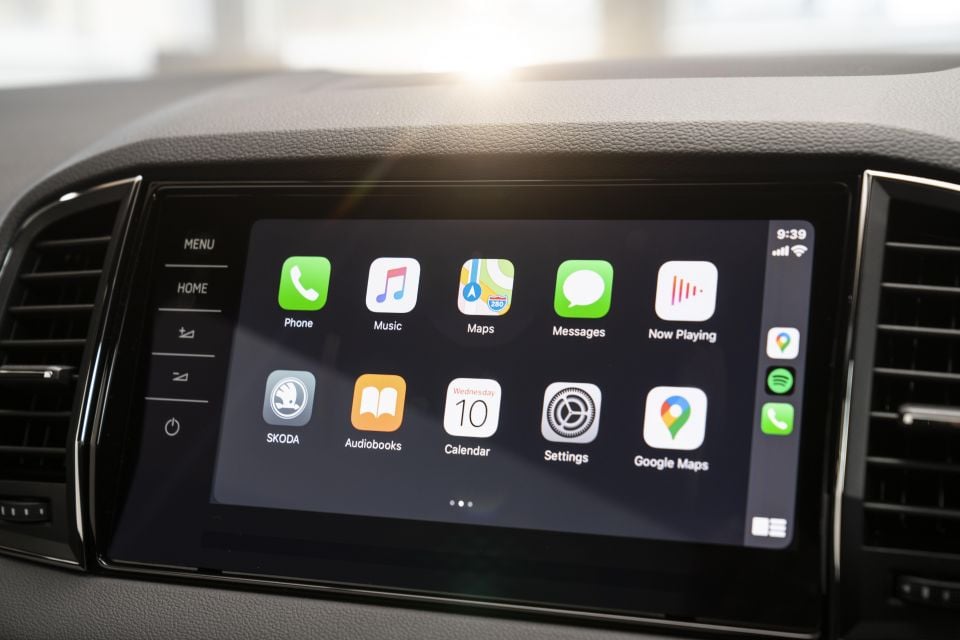
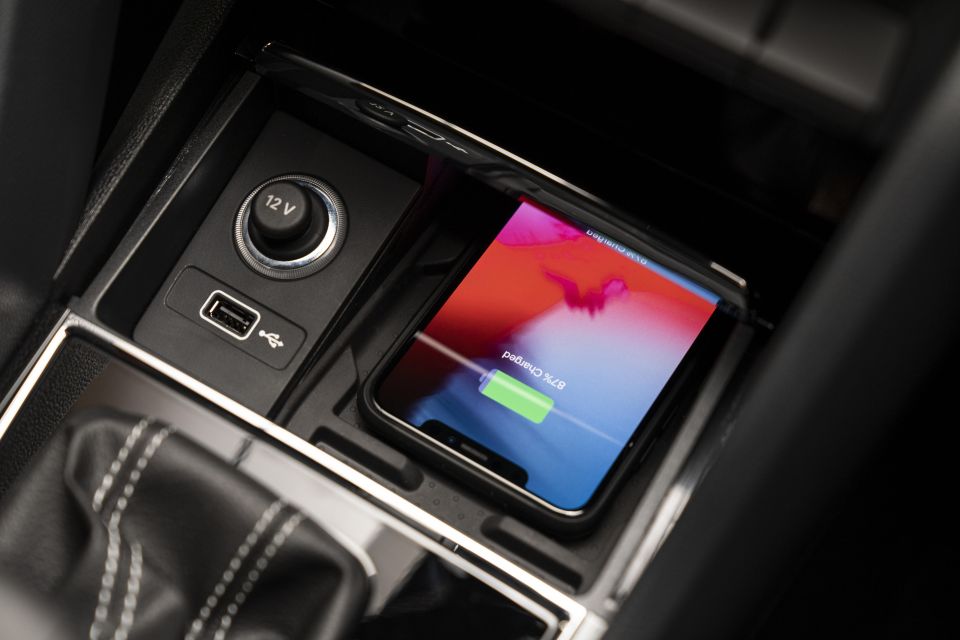
Back seat passengers also benefit from air vents, and the same luxe-looking quilted trim as the front seats.
Boot space is impressive for such a compact package. You get 479L with the rear seats in place, and a whopping 1605L with them folded flat – thanks no doubt to the car’s boxy profile. You’ll get a lot more into the Karoq than you will the similarly-sized Volkswagen T-Roc.
Fans of the Skoda Roomster (may it rest in peace) will be pleased to know an evolution of the clever Vario Flex seating system is available in the base Karoq, although it’s not featured in the Sportline.
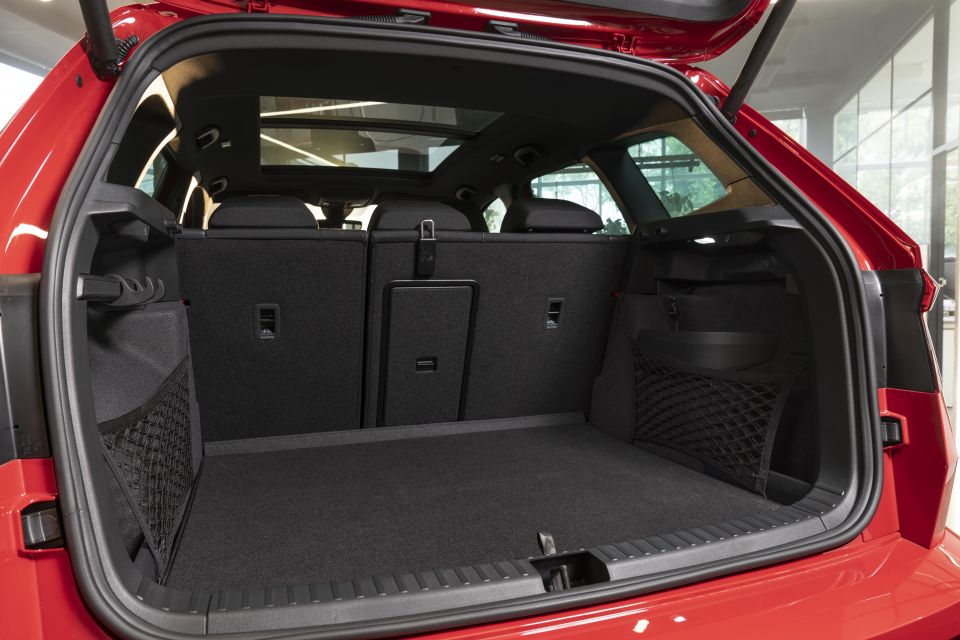
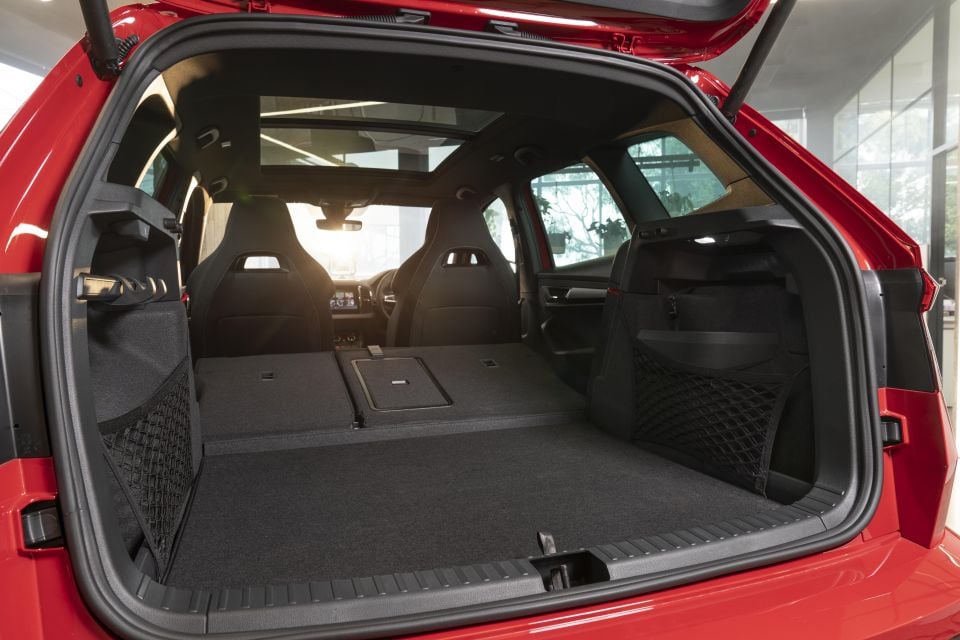
There is a clever sliding rack system back there for hanging shopping bags, and netting to keep loose items from sliding around.
Issues? The materials are good in most places, with plenty of soft touch on the dashboard and door tops, but there are still a few scratchy plastics down low in the front. The plastic cover for the wireless phone charger is also a bit cheap in its movement, but there isn’t really much to complain about here.
Power in the Skoda Karoq Sportline comes from a 2.0-litre turbocharged four-cylinder petrol engine with 140kW of power and 320Nm of torque, put to all four wheels through a seven-speed dual-clutch transmission.
Skoda claims it uses 6.9L/100km of fuel on the combined cycle.
Although it’s a normal Volkswagen Group engine on the surface, the Karoq is packing a clean little secret: it has a petrol particulate filter.
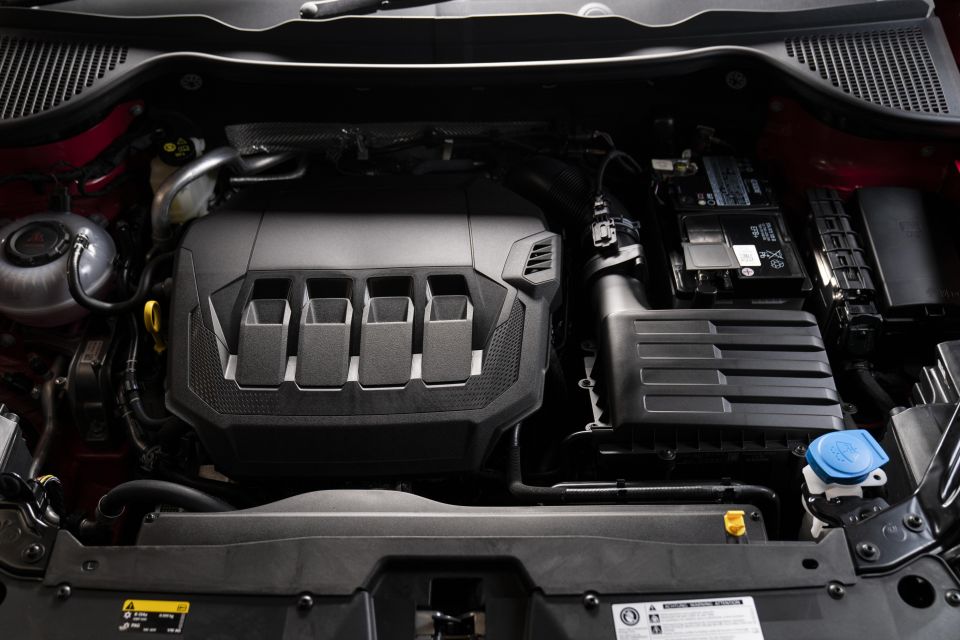
Necessary to meet emissions regulations in Europe, the filter is designed to catch the worst, most harmful particles in the car’s exhaust and burn them off at high temperatures to prevent them being emitted into the atmosphere.
Skoda is stressing the fact owners need to use premium unleaded in the car. Australian petrol contains significantly more sulphur than the unleaded sold in Europe, especially in the case of 91RON regular unleaded, which can clog the filter.
If the car is filled with the wrong fuel just a few times, owners face a hefty repair bill.
The 140TSI Sportline is like a Karoq that’s drunk a double espresso. It’s still a practical little crossover, but there’s a dash of extra pep in its step.
The engine is an EA888 four-cylinder unit, which means its shares its bones with the 2.0-litre engine in the Golf GTI. Although it’s down on power compared to the punchier performance Golf, the 140TSI in the Sportline packs enough punch.
Peak torque comes on tap at just 1500rpm and sticks about until 4000rpm, so it’s never light on for performance when you lean on the throttle at low engine speeds. Really put your foot down and the Karoq shows a surprising turn of speed.
Skoda says the 100km/h sprint takes a warm-hatch matching 7.0 seconds, and it feels believable.
The engine isn’t just punchy, it’s smooth and refined. It emits barely a murmur at cruising speeds, and has a raspy note when pushed. Unlike the small displacement engines in some compact crossovers, the 140TSI doesn’t become coarse at the top end either. It just feels mature, with all the rough edges sanded away.
Not everyone loves dual-clutch transmissions, but the seven-speeder in the Karoq is a natural pairing for the turbo’d four-cylinder engine.
It’s smooth enough off the line, and shifts are impressively snappy on the move. The car’s computer will shuffle to the tallest ratio possible in Normal and Comfort modes, which can somewhat dull response on light throttle inputs, but it’s happy to kick down when you lean a bit harder on the right-hand pedal.
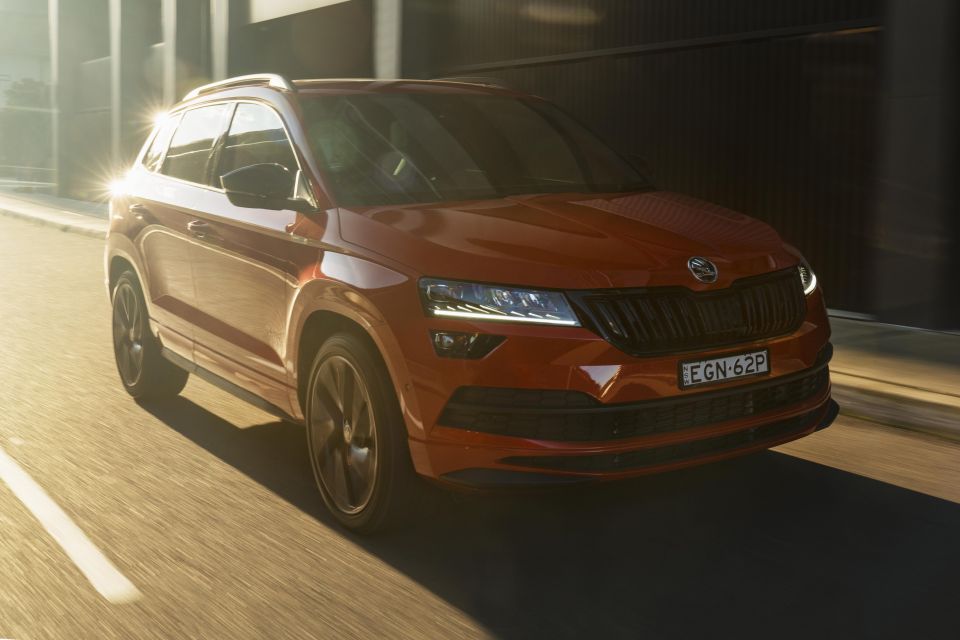

Sport mode locks the transmission into a lower gear, which is handy if you’re bombing along a mountain pass – but if you’re in a hurry, it’s generally better to take control using the paddles behind the wheel.
With 19-inch alloy wheels and a sportier suspension tune, the Sportline has a firmer ride than the base Karoq. It’s not unbearable by any measure, but potholes make their presence felt more sharply in Normal mode, and Sport is arguably too firm for day-to-day work.
It’s on the firmer side of comfortable, but we’d argue buyers should know what they’re getting in for given the big wheels and Sportline badge.
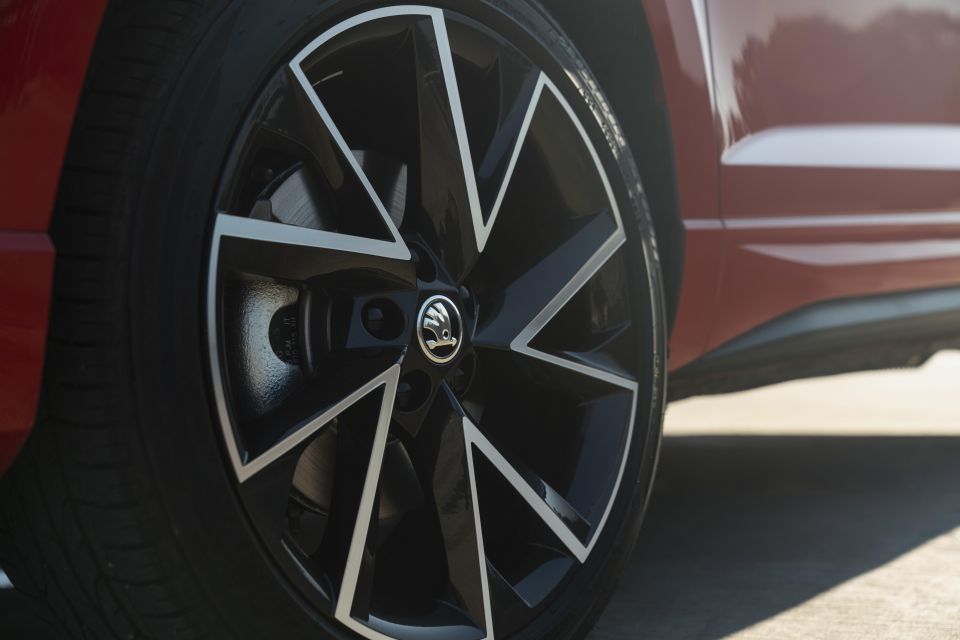
There’s always the option of flicking into Comfort, which slackens the suspension to the edge of what we’d call floaty. I don’t mind it. I ran a Kodiaq Sportline in a past life, and the softest setting became my default.
Sling it into a corner and, with the suspension in its stiffest mode, the Karoq handles like a slightly taller Volkswagen Golf. Body control is impressive and the handling is predictably neutral, making this a crossover capable of getting a move on.
Then again, we’re waiting for the Volkswagen T-Roc R for an indication of what the Volkswagen Group’s stable of small SUVs can really do.
Maintenance for the Karoq is required every 12 months or 15,000km, and the car is backed by a five-year, unlimited-kilometre warranty.
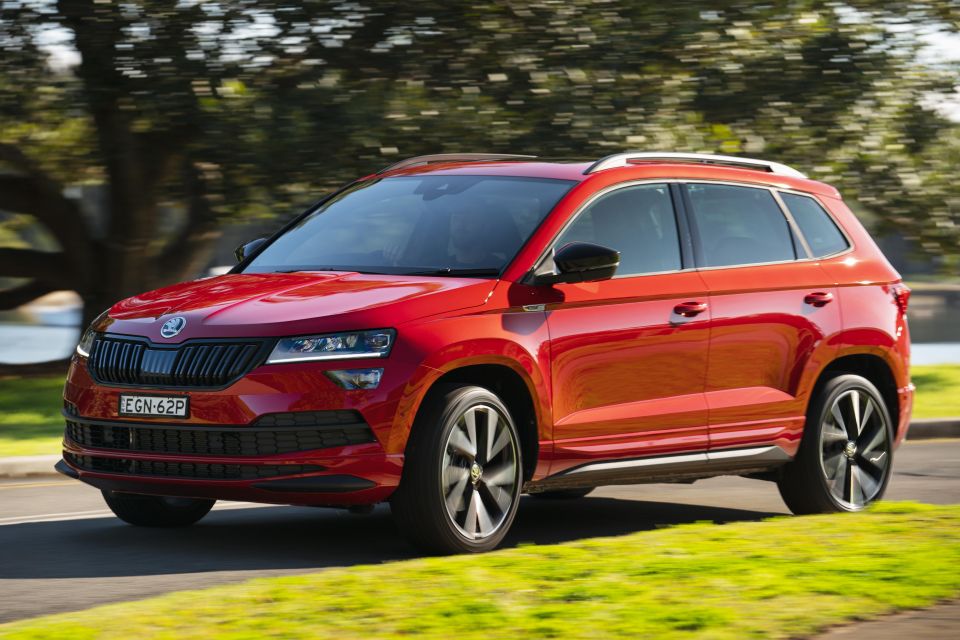
Where expert car reviews meet expert car buying – CarExpert gives you trusted advice, personalised service and real savings on your next new car.
A five-year service pack for the Karoq costs $1400, while a three-year pack will set you back $800 when bought before the first service.
The Karoq requires more expensive 95RON or 98RON premium unleaded petrol, which does increase running costs slightly.
Buy your new car without the stress. It's fast, simple and completely free.

Great service from Travis and team, second time I have used this business would not hesitate to recommend them to anyone
Craig C.
Purchased a Ford Ranger in Sunshine Coast, QLD
CarExpert helped Craig save $7,224 on his Ford Ranger, now let us save you on your next new car.
Get your BEST priceI really like the Karoq 140TSI Sportline. I love the way it looks with big wheels and the sporty bodykit, and can easily see how its practical interior would slot into my life.
The fact the 140TSI is powered by such a smooth, punchy engine just sweetens the deal. I’d have one over a Volkswagen T-Roc for the way it looks, and the versatile interior puts it ahead of the Mazda CX-30 on my list of compact SUVs.

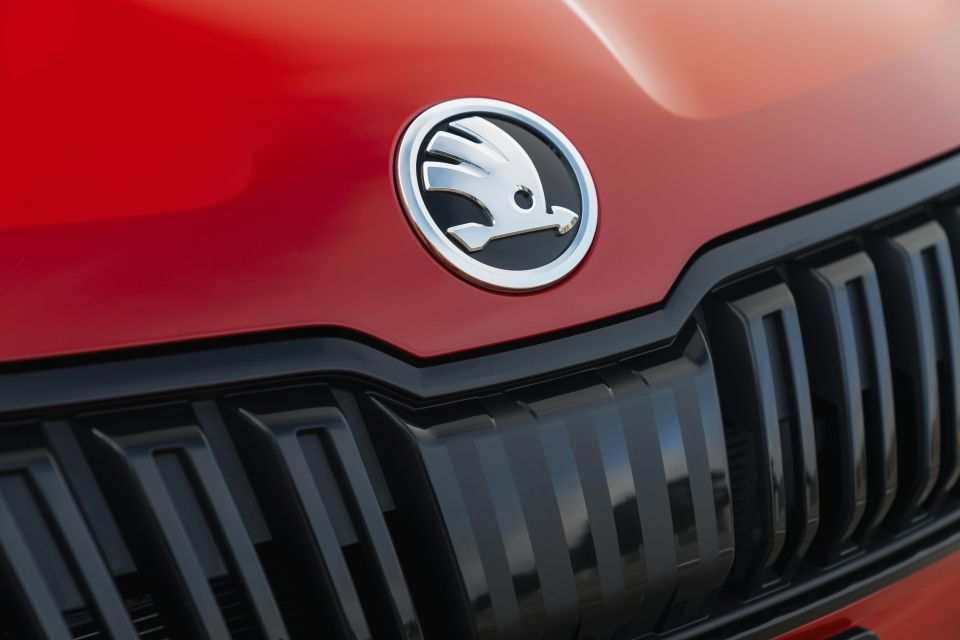
The only real question mark is the price. Is the Sportline premium enough to justify a fully-optioned sticker price nudging $50,000 before on-road costs?
It isn’t far from it – I just wish Skoda had subbed the not-quite-neoprene seat trim for some leather or suede.
Where expert car reviews meet expert car buying – CarExpert gives you trusted advice, personalised service and real savings on your next new car.
Scott Collie is an automotive journalist based in Melbourne, Australia. Scott studied journalism at RMIT University and, after a lifelong obsession with everything automotive, started covering the car industry shortly afterwards. He has a passion for travel, and is an avid Melbourne Demons supporter.


Max Davies
5 Days Ago


Max Davies
4 Days Ago


Neil Briscoe
3 Days Ago


Max Davies
2 Days Ago
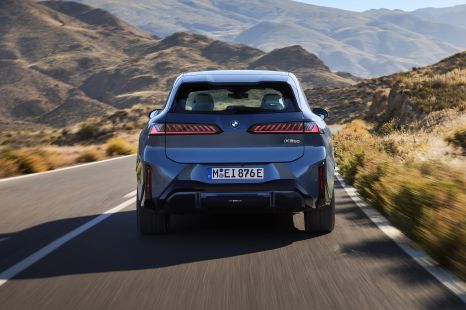

Alborz Fallah
17 Hours Ago


Damion Smy
16 Hours Ago